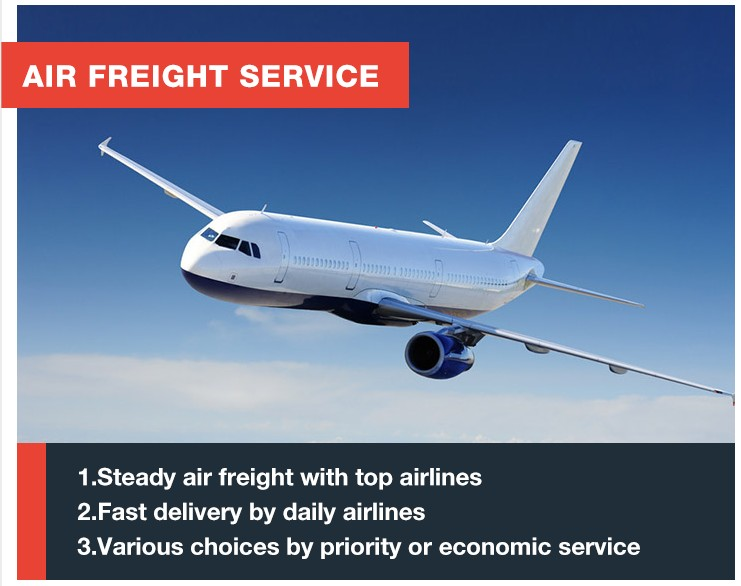Enhancing Performance Across Global Supply Chains
In today's interconnected world, businesses must meet the demands of rapid delivery and consistent quality. Freight by Air has emerged as a cornerstone in logistics strategy, especially for time-sensitive and high-value goods. As global supply chains evolve, incorporating speed, reliability, and resilience has become essential. Air transport offers unmatched advantages that support operational excellence across all sectors.
Freight by Air provides a crucial link for manufacturers, retailers, and suppliers to stay ahead of competition. It bridges distances quickly, enabling swift market entry and reducing cycle times. By using this method, businesses optimize inventory management, lower the risk of damage, and streamline high-value shipments. These benefits make Freight by Air a smart and scalable solution.
Speed as a Core Supply Chain Driver
Faster Transit for Critical Deliveries
Freight by Air dramatically shortens transit times, often cutting delivery durations from weeks to days. This speed proves critical for businesses handling medical supplies, electronics, or seasonal merchandise. When markets demand quick replenishment, air logistics delivers results.
Such efficiency minimizes disruptions caused by delays. Air transport allows for immediate recovery in the face of production hiccups or unexpected orders. For industries operating on just-in-time models, every hour counts, and Freight by Air makes those hours productive. In many sectors, including automotive and pharmaceutical, the speed of delivery can be the difference between success and costly downtime.
Meeting Tight Production Schedules
Many global manufacturers rely on Freight by Air to meet rigid production calendars. When components arrive late, entire assembly lines stall. With air freight, businesses can confidently align shipment schedules with production flows.
By incorporating flexible routing and dependable service levels, air freight supports operational continuity. This flexibility becomes a competitive advantage in markets where launch windows and customer expectations are shrinking. Timely arrival of parts ensures productivity remains high, and contractual commitments are honored without compromise.
Reliability in a Time-Pressured Economy
Minimized Risks and Increased Predictability
Freight by Air ensures a higher degree of predictability compared to ocean or land freight. Airlines follow strict schedules with minimal deviations, enhancing shipment reliability. This predictability enables better supply planning and reduces uncertainty in fulfillment.
With air routes covering remote or difficult-to-access regions, air logistics becomes a valuable option for businesses expanding their reach. Stable transit conditions mean fewer delays and damage claims, which improves customer satisfaction. When businesses can predict outcomes more accurately, they are better positioned to maintain service level agreements and customer trust.
Reduced Inventory and Warehousing Costs
Using Freight by Air enables leaner inventory models. Companies no longer need to overstock goods to cushion against transit delays. This efficiency lowers storage expenses and minimizes capital tied up in warehoused products.
Businesses can shift toward a demand-driven supply model. With shorter lead times, supply meets actual market needs rather than forecasts, improving responsiveness and reducing waste. The ability to fulfill orders with precision and agility strengthens operational performance and profit margins.
Optimizing High-Value and Sensitive Goods Transport
Protection for Fragile and Perishable Products
Certain goods, such as pharmaceuticals, fresh produce, and electronics, require special handling. Freight by Air offers controlled environments and rapid delivery, which preserve product integrity throughout the journey.
From temperature control to reduced handling, air freight reduces exposure to damaging conditions. These features make it ideal for sensitive or high-cost cargo that cannot withstand long transits or multiple transfers. In industries with strict quality regulations, this level of care ensures compliance and customer satisfaction.
Enhanced Security and Tracking
Cargo shipped by air benefits from heightened security protocols. Airports implement rigorous inspections and tracking technologies that safeguard against theft or tampering. This protection is especially vital for shipments involving confidential documents or valuable materials.
Real-time tracking adds another layer of confidence. Businesses gain visibility over their supply chain, improving accountability and communication between stakeholders. Transparency allows companies to identify inefficiencies, make informed decisions, and deliver consistent results.
Environmental Considerations in Freight by Air
Evolving Sustainability Practices
Though air freight has a larger carbon footprint than other methods, efforts are being made to reduce its environmental impact. Fuel-efficient aircraft, optimized flight paths, and carbon offset programs are helping balance sustainability goals.
Freight by Air may also contribute indirectly to sustainability by minimizing overproduction and wastage due to faster response cycles. As innovation continues, the industry is adapting to more eco-friendly models without compromising performance. Cleaner engines, lightweight materials, and better fleet management are shaping a greener future.
Strategic Use of Air Freight in Green Logistics
Air freight can complement sustainable logistics strategies when used selectively. For urgent or high-value deliveries, its use reduces the need for excess stock and energy-intensive warehousing. This strategic balance minimizes total environmental impact while keeping supply chains agile.
Combining Freight by Air with multimodal solutions also enhances efficiency. Businesses can prioritize air freight for time-critical stages, while using greener alternatives for less urgent legs. Integrating these modes allows for responsible logistics without sacrificing customer expectations.

Economic Impacts and Market Agility
Supporting Global Trade and Market Entry
Freight by Air plays a pivotal role in enabling international trade. Businesses expand into new markets faster, leveraging air freight to launch products or replenish inventory on demand. This capability supports dynamic business models that thrive on speed and responsiveness.
Small and medium enterprises benefit as well, gaining access to global platforms without needing large-scale logistics operations. Air freight levels the playing field for companies competing across borders. Faster access to new regions supports growth, job creation, and economic integration.
Aligning with E-Commerce and Customer Expectations
The rise of e-commerce has shifted customer expectations toward fast, transparent delivery. Freight by Air addresses this challenge with end-to-end tracking, rapid transit, and high reliability. Online retailers depend on these advantages to maintain customer satisfaction and loyalty.
With shorter delivery times, businesses enhance their customer value proposition. This timeliness becomes a brand differentiator in crowded marketplaces. Meeting these expectations strengthens customer relationships and leads to repeat business.
FAQ
How does Freight by Air compare in cost to ocean shipping?
Air freight is typically more expensive than sea transport, but the cost is justified for urgent, high-value, or time-sensitive goods. It also saves on warehousing and inventory costs.
Is air freight suitable for all types of cargo?
Not all cargo types are ideal for air shipment. Oversized, heavy, or hazardous items may face restrictions. However, many industries benefit from air freight for standard packages and sensitive goods.
What are the main risks involved in Freight by Air?
While generally secure, air freight may face risks such as weather disruptions, capacity limits, and regulatory constraints. Working with experienced carriers minimizes these challenges.
Can air freight help with supply chain disruptions?
Yes, Freight by Air is often used to recover from supply chain interruptions quickly. It allows businesses to restore inventory flow and meet demand even when other modes fail.



